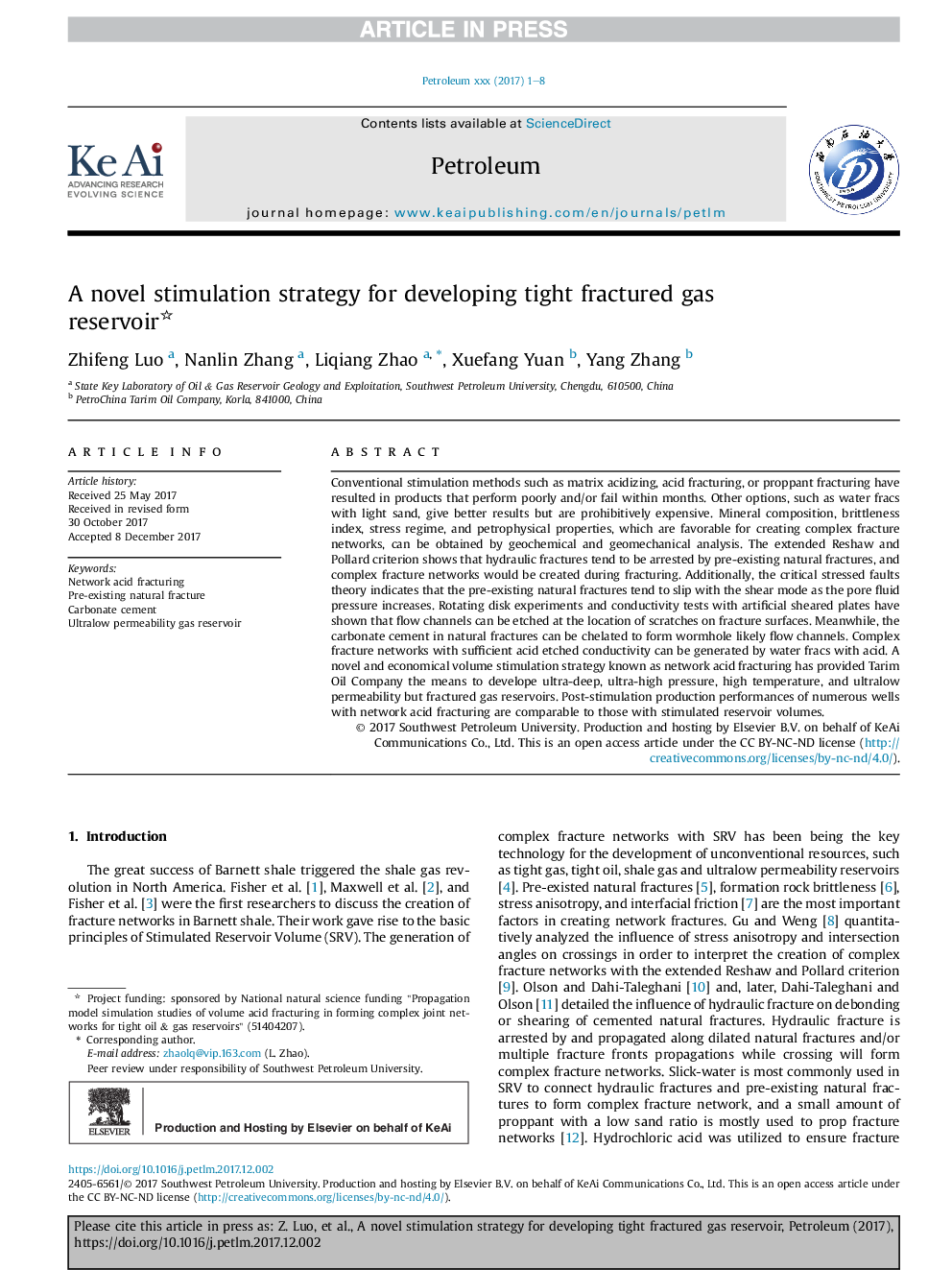| کد مقاله | کد نشریه | سال انتشار | مقاله انگلیسی | نسخه تمام متن |
|---|---|---|---|---|
| 7225421 | 1470606 | 2018 | 8 صفحه PDF | دانلود رایگان |
عنوان انگلیسی مقاله ISI
A novel stimulation strategy for developing tight fractured gas reservoir
ترجمه فارسی عنوان
یک استراتژی تحرک جدید برای توسعه مخزن گاز شکست خورده
دانلود مقاله + سفارش ترجمه
دانلود مقاله ISI انگلیسی
رایگان برای ایرانیان
کلمات کلیدی
موضوعات مرتبط
مهندسی و علوم پایه
مهندسی انرژی
انرژی (عمومی)
چکیده انگلیسی
Conventional stimulation methods such as matrix acidizing, acid fracturing, or proppant fracturing have resulted in products that perform poorly and/or fail within months. Other options, such as water fracs with light sand, give better results but are prohibitively expensive. Mineral composition, brittleness index, stress regime, and petrophysical properties, which are favorable for creating complex fracture networks, can be obtained by geochemical and geomechanical analysis. The extended Reshaw and Pollard criterion shows that hydraulic fractures tend to be arrested by pre-existing natural fractures, and complex fracture networks would be created during fracturing. Additionally, the critical stressed faults theory indicates that the pre-existing natural fractures tend to slip with the shear mode as the pore fluid pressure increases. Rotating disk experiments and conductivity tests with artificial sheared plates have shown that flow channels can be etched at the location of scratches on fracture surfaces. Meanwhile, the carbonate cement in natural fractures can be chelated to form wormhole likely flow channels. Complex fracture networks with sufficient acid etched conductivity can be generated by water fracs with acid. A novel and economical volume stimulation strategy known as network acid fracturing has provided Tarim Oil Company the means to develope ultra-deep, ultra-high pressure, high temperature, and ultralow permeability but fractured gas reservoirs. Post-stimulation production performances of numerous wells with network acid fracturing are comparable to those with stimulated reservoir volumes.
ناشر
Database: Elsevier - ScienceDirect (ساینس دایرکت)
Journal: Petroleum - Volume 4, Issue 2, June 2018, Pages 215-222
Journal: Petroleum - Volume 4, Issue 2, June 2018, Pages 215-222
نویسندگان
Zhifeng Luo, Nanlin Zhang, Liqiang Zhao, Xuefang Yuan, Yang Zhang,
